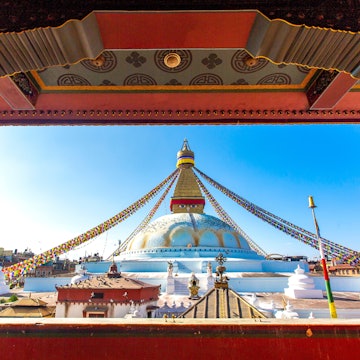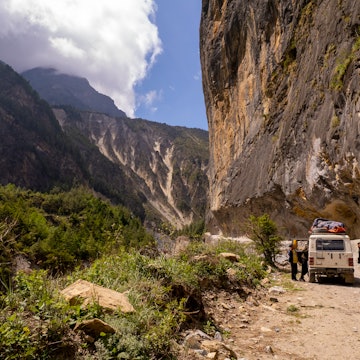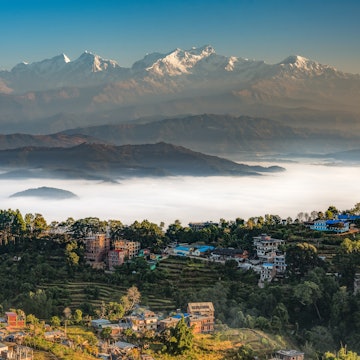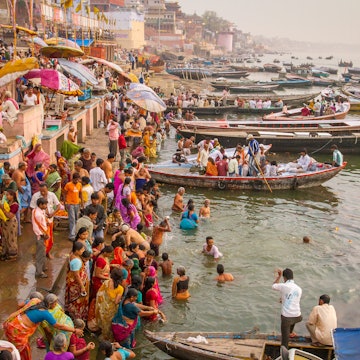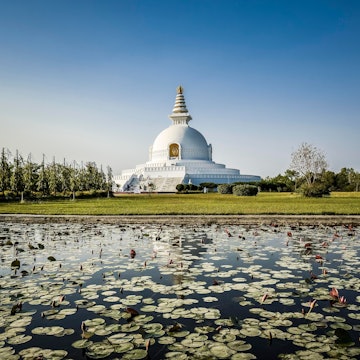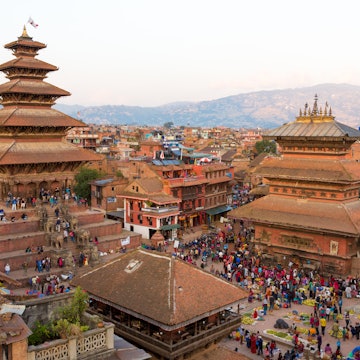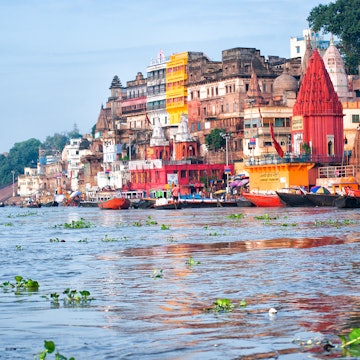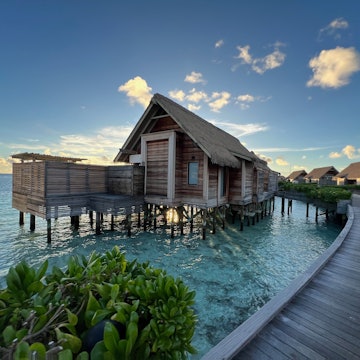

Entering a village on the Annapurna Circuit Trek. Moroz Nataliya/Shutterstock
With historic monasteries, abundant wildlife and world-class hiking, mountain biking and white water rafting, it’s easy to understand why Nepal draws people from around the world. Few countries fit so many thrilling landscapes – from the towering Himalayas to forested foothills and steamy lowlands – into such a small area.
Deciding to visit Nepal is easy, but the logistics of getting into the country can be a bit more complicated for some travelers. Here’s our guide to the visa requirements for Nepal, including information on tourist visas, how to extend your stay and applying to work or study in the country.

Most travelers can get a Nepali visa on arrival
Here's the good news – for most travelers, the entry requirements for Nepal are fairly simple and pain-free. Indian citizens do not need a tourist visa to visit the country, and most other tourists can get a 15-, 30- or 90-day visa on arrival. This includes visitors from the USA, Canada, Australia, New Zealand, Japan, South Korea, the UK, Ireland, and France, Germany and most Western European countries.
How to get a visa on arrival in Nepal
When you land at Kathmandu’s Tribhuvan International Airport, you need to complete an arrival card and have your photo taken at one of the automatic registration machines – to save time, you can do this online in advance within 15 days of your arrival. If you leave it till you land in Kathmandu, expect the process to take over an hour, with lots of queuing.
Once the paperwork is filed out, you must then pay a visa fee of 30 US dollars (US$) for 15 days, US$50 for 30 days or US$125 for 90 days at the payment counter. Children under age 10 do not need to pay for tourist visas unless they are US citizens. Payment is accepted in a variety of major currencies, but it’s advisable to bring small bills. Finally, head to the immigration desk with your arrival form, payment receipt and passport.
Some travelers can get a free visa
Reflecting Nepal's friendly relations with neighboring states, Chinese citizens are eligible for a free tourist visa, while Indian travelers can enter Nepal without a tourist visa. Travelers from many South Asian Association for Regional Cooperation (SAARC) countries can get a free 30-day visa for their first visit to Nepal in a calendar year. This rule applies to citizens of Bangladesh, Bhutan, the Maldives, Pakistan and Sri Lanka but not to citizens of Afghanistan.
Other travelers must get a visa in advance
Citizens of Afghanistan, Cameroon, Eswatini, Ethiopia, Ghana, Iraq, Liberia, Nigeria, Palestine, Somalia, Syria and Zimbabwe must obtain a visa from their local Nepali embassy or consulate before traveling. Refugees with travel documents from their host nation must do the same.
Crossing into Nepal overland
You can also cross into Nepal overland via a series of border crossings in the Terai plains, including the busy crossings at Sunauli in India to Siddharthanagar (Bhairawa) in Nepal, accessible by bus from Delhi and Varanasi in Uttar Pradesh. You can still get a visa on arrival if you enter Nepal by land, but it's best to bring some passport photos with you, and you'll need to pay the visa fee in cash in US currency.

Getting a visa in advance will save time
Even if you're eligible for a visa on arrival, the lines for a tourist visa at Tribhuvan airport can move painfully slowly, particularly during the October and November peak season. To save time, you can get a tourist visa in advance from the Nepali embassy or consulate in your home country (or the nearest embassy in a neighboring state).
If you obtain a visa before you travel, you must enter the country within 6 months of the visa being issued, though the 15-, 30- or 90-day period starts when you actually arrive in Nepal. The Ministry of Foreign Affairs has a full list of Nepali overseas missions.

Travelers can pay extra for a multiple entry visa
While it's more common to detour from India to Nepal than the other way around, you can turn your single-entry Nepali visa into a multiple-entry visa for US$25 at the Department of Immigration in Kathmandu or the smaller office in Pokhara. This is helpful if you plan to take a side trip from Nepal to Bhutan or Tibet.
If you are entering Nepal from India and plan to return to India, make sure you get a multiple-entry Indian visa – obtaining a new visa for India in Kathmandu is a slow and complicated process.
How to get a Nepali visa extension as a traveler
If you need more of Nepal's mountains and monasteries, you can extend your visa at the Department of Immigration offices in Kathmandu or Pokhara up to a limit of 150 days in any calendar year (January to December). Extensions cost US$45 for the first 15 days, followed by US$3 per day until you reach the 150-day limit.
Don’t overstay your visa – if you do, you’ll be fined US$5 per day and may have trouble visiting Nepal in future. Make sure you leave a gap of several days between the end of a trek and your international flight home in case there are delays getting back to Kathmandu from the trailhead.
Apply for work and study visas well in advance of travel
If you want to work or study in Nepal, you need to apply for a special class of visa and fulfill a number of strict criteria. The process can be complicated, bureaucratic and time-consuming, as you have to provide recommendation letters, bank statements and other documents. Visit the Department of Immigration’s website for detailed information.








